Themed collection Insightful Machine Learning for Physical Chemistry

Themed collection on Insightful Machine Learning for Physical Chemistry
This themed collection includes a collection of articles on Insightful Machine Learning for Physical Chemistry.

Phys. Chem. Chem. Phys., 2023,25, 22563-22564
https://doi.org/10.1039/D3CP90129G
Machine learning in computational chemistry: interplay between (non)linearity, basis sets, and dimensionality
A basis expansion view of popular ML methods is useful and can explain their properties and pitfalls, in particular in high-dimensional spaces and under low density, uneven data distribution.
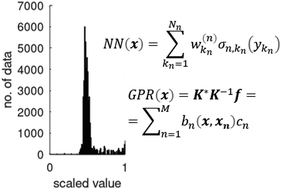
Phys. Chem. Chem. Phys., 2023,25, 1546-1555
https://doi.org/10.1039/D2CP04155C
How machine learning can extend electroanalytical measurements beyond analytical interpretation
Machine learning can simultaneously infer multiple physics-consistent material properties from electroanalytical tests, as well as describe underlying field variations.

Phys. Chem. Chem. Phys., 2024,26, 2153-2167
https://doi.org/10.1039/D3CP04628A
Analyzing drop coalescence in microfluidic devices with a deep learning generative model
Predicting drop coalescence based on process parameters is crucial for experimental design in chemical engineering.

Phys. Chem. Chem. Phys., 2023,25, 15744-15755
https://doi.org/10.1039/D2CP05975D
Δ-Machine learning for quantum chemistry prediction of solution-phase molecular properties at the ground and excited states
We investigated the various factors impacting the performance of Δ-machine learning (Δ-ML) solution phase molecular properties.

Phys. Chem. Chem. Phys., 2023,25, 13417-13428
https://doi.org/10.1039/D3CP00506B
Machine learning transferable atomic forces for large systems from underconverged molecular fragments
Molecular fragments of metal–organic frameworks can be used to construct high-dimensional neural network potentials. Here we provide a recipe of how the smallest possible fragments can be chosen that still provide a HDNNP transferable to the bulk crystal.
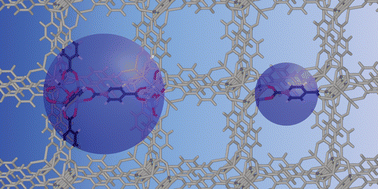
Phys. Chem. Chem. Phys., 2023,25, 12979-12989
https://doi.org/10.1039/D2CP05976B
Easy and fast prediction of green solvents for small molecule donor-based organic solar cells through machine learning
A fast machine learning based framework is introduced for the prediction of solubility parameters and selection of green solvents for small molecular donor-based organic solar cells.

Phys. Chem. Chem. Phys., 2023,25, 10417-10426
https://doi.org/10.1039/D3CP00177F
Insights into the deviation from piecewise linearity in transition metal complexes from supervised machine learning models
Artificial neural networks trained on 23 density functional approximations (DFAs) from multiple rungs of “Jacob's ladder” enable the prediction of where each DFA has zero curvature for chemical discovery.
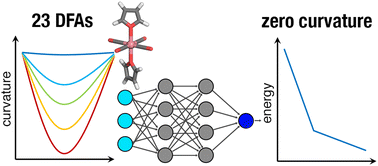
Phys. Chem. Chem. Phys., 2023,25, 8103-8116
https://doi.org/10.1039/D3CP00258F
Thermal transport across copper–water interfaces according to deep potential molecular dynamics
A deep learning potential distinct from the empirical potential is developed for the study of thermal transport across solid–liquid interfaces.

Phys. Chem. Chem. Phys., 2023,25, 6746-6756
https://doi.org/10.1039/D2CP05530A
Transfer learning for chemically accurate interatomic neural network potentials
We study the capability of transfer learning for efficiently generating chemically accurate interatomic neural network potentials.

Phys. Chem. Chem. Phys., 2023,25, 5383-5396
https://doi.org/10.1039/D2CP05793J
Investigating the Eley–Rideal recombination of hydrogen atoms on Cu (111) via a high-dimensional neural network potential energy surface
A prototypical Eley–Rideal reaction between incident H/D atoms and pre-covered D/H atoms on Cu (111) is studied by molecular dynamics simulations using a neural network potential with first-principles accuracy.

Phys. Chem. Chem. Phys., 2023,25, 5479-5488
https://doi.org/10.1039/D2CP05479E
Bayesian chemical reaction neural network for autonomous kinetic uncertainty quantification
We develop Bayesian Chemical Reaction Neural Network (B-CRNN), a method to infer chemical reaction models and provide the associated uncertainty purely from data without prior knowledge of reaction templates.
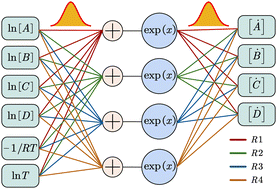
Phys. Chem. Chem. Phys., 2023,25, 3707-3717
https://doi.org/10.1039/D2CP05083H
Prediction of parameters of group contribution models of mixtures by matrix completion
We present an approach to predict the group-interaction parameters of thermodynamic group contribution (GC) methods based on the machine-learning concept of matrix completion and thereby substantially extend the scope of GC methods.

Phys. Chem. Chem. Phys., 2023,25, 1054-1062
https://doi.org/10.1039/D2CP04478A
Combination of explainable machine learning and conceptual density functional theory: applications for the study of key solvation mechanisms
We present explainable machine learning approaches for understanding and predicting free energies, enthalpies, and entropies of ion pairing in different solvents.
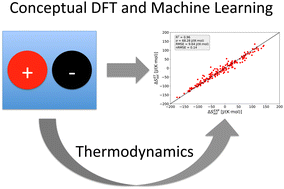
Phys. Chem. Chem. Phys., 2022,24, 28314-28324
https://doi.org/10.1039/D2CP04428E
Solvent selection for polymers enabled by generalized chemical fingerprinting and machine learning
We present machine learning models trained on experimental data to predict room-temperature solubility for any polymer–solvent pair.
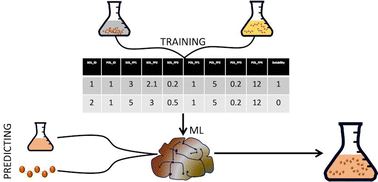
Phys. Chem. Chem. Phys., 2022,24, 26547-26555
https://doi.org/10.1039/D2CP03735A
The principal component analysis of the ring deformation in the nonadiabatic surface hopping dynamics
We proposed a “hierarchical” protocol based on the unsupervised machine learning algorithms (principal component analysis and clustering approaches) to automatically analyze the ring deformation in the nonadiabatic molecular dynamics.
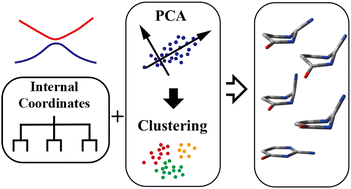
Phys. Chem. Chem. Phys., 2022,24, 24362-24382
https://doi.org/10.1039/D2CP03323B
Harnessing deep reinforcement learning to construct time-dependent optimal fields for quantum control dynamics
Deep reinforcement learning can be used as an efficient artificial intelligence approach to control time-dependent quantum dynamical systems.
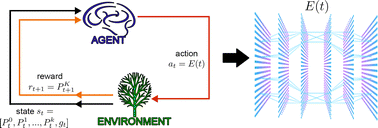
Phys. Chem. Chem. Phys., 2022,24, 24012-24020
https://doi.org/10.1039/D2CP02495K
Graph-convolutional neural networks for (QM)ML/MM molecular dynamics simulations
The use of graph convolutional neural networks for mixed (QM)ML/MM molecular dynamics simulations of condensed-phase systems is investigated and benchmarked. We find that a Δ-learning scheme using DFTB as a baseline achieves the best performance.

Phys. Chem. Chem. Phys., 2022,24, 22497-22512
https://doi.org/10.1039/D2CP02931F
About this collection
Machine learning has firmly entered the field of physical chemistry and chemical physics by greatly accelerating and improving the accuracy of ground- and excited-state simulations as well as guiding the design of materials based on soft and hard matter. It is increasingly realized that machine learning is also a powerful tool for providing insights into such applications. Our special issue on "Insightful Machine Learning for Physical Chemistry" invites contributions from various fields with a focus on design principles for new materials encompassing both hard and soft matter, learning many-body correlations, multi-scale physical chemistry, and uncovering phenomena for excited matter.
The guest editors for the collection are:
- Isaac Tamblyn, University of Ottawa and University of Waterloo
- Pavlo O. Dral, Xiamen University
- Olexandr Isayev, Carnegie Mellon University
- Aurora Clark, Washington State University